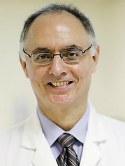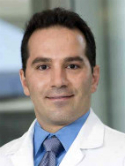Stem cell mobilization and autograft minimal residual disease negativity with novel induction regimens in multiple myeloma Journal Article
| Authors: | Bal, S.; Landau, H. J.; Shah, G. L.; Scordo, M.; Dahi, P.; Lahoud, O. B.; Hassoun, H.; Hultcrantz, M.; Korde, N.; Lendvai, N.; Lesokhin, A. M.; Mailankody, S.; Shah, U. A.; Smith, E.; Devlin, S. M.; Avecilla, S.; Dogan, A.; Roshal, M.; Landgren, O.; Giralt, S. A.; Chung, D. J. |
| Article Title: | Stem cell mobilization and autograft minimal residual disease negativity with novel induction regimens in multiple myeloma |
| Abstract: | Autologous stem cell transplantation (ASCT) remains the standard of care for transplantation-eligible patients with multiple myeloma (MM). Bortezomib with lenalidomide and dexamethasone (VRD) is the most common triplet regimen for newly diagnosed MM in the United States. Carfilzomib with lenalidomide and dexamethasone (KRD) has shown promising efficacy and may supplant VRD. We compared stem cell yields and autograft minimal residual disease (MRD)-negativity after VRD and KRD induction. Deeper responses (ie, very good partial response or better) were more common with KRD. Precollection bone marrow (BM) cellularity, interval from the end of induction therapy to start of stem cell collection, and method of stem cell mobilization were similar for the 2 cohorts. Days to complete collection was greater with KRD (2.2 days, versus 1.81 days with VRD), which more often required ≥3 days of apheresis. Precollection viable CD34+ cell content was greater with VRD, as was collection yield (11.11 × 106, versus 9.19 × 106 with KRD). Collection failure (defined as <2 × 106 CD34+ cells/kg) was more frequent with KRD (5.4% versus.7% with VRD). The difference in stem cell yield between VRD and KRD is associated with the degree of lenalidomide exposure. Age ≥70 years predicted poorer collection for both cohorts. Stem cell autograft purity/MRD-negativity was higher with KRD (81.4%, versus 57.1% with VRD). For both cohorts, MRD-negativity was attained in a larger fraction of autografts than in precollection BM. For patients proceeding to ASCT, the time to neutrophil/platelet engraftment was comparable in the 2 study arms. In summary, our data demonstrate that KRD induces deeper clinical responses and greater autograft purity than VRD without compromising stem cell yield or post-transplantation engraftment kinetics. © 2020 American Society for Transplantation and Cellular Therapy |
| Keywords: | multiple myeloma; minimal residual disease; autograft purity |
| Journal Title: | Biology of Blood and Marrow Transplantation |
| Volume: | 26 |
| Issue: | 8 |
| ISSN: | 1083-8791 |
| Publisher: | Elsevier Inc. |
| Date Published: | 2020-08-01 |
| Start Page: | 1394 |
| End Page: | 1401 |
| Language: | English |
| DOI: | 10.1016/j.bbmt.2020.04.011 |
| PUBMED: | 32442725 |
| PROVIDER: | scopus |
| PMCID: | PMC7371503 |
| DOI/URL: | |
| Notes: | Article -- Export Date: 1 September 2020 -- Source: Scopus |
Altmetric
Citation Impact
BMJ Impact Analytics
MSK Authors
Related MSK Work























